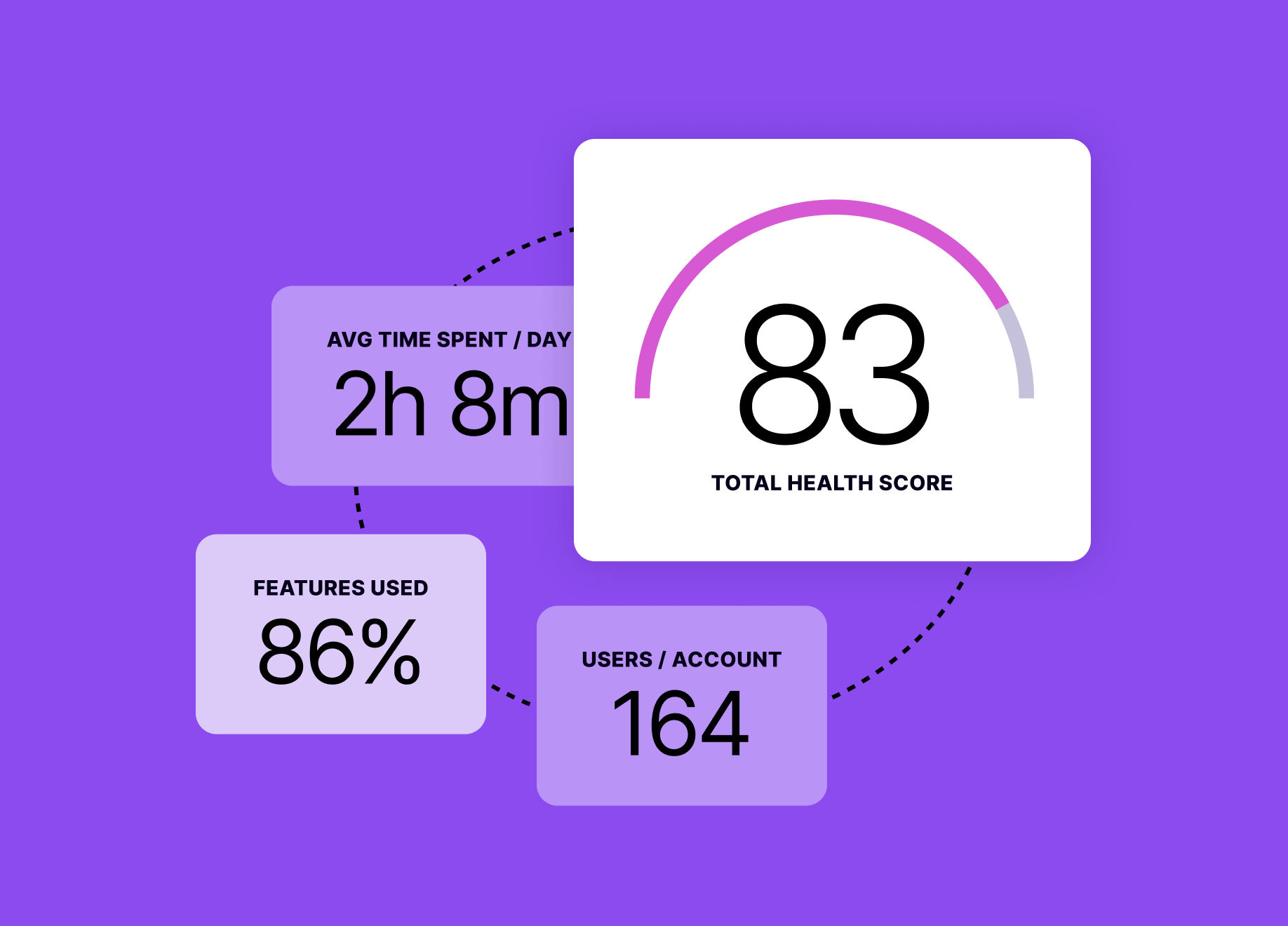Table of Contents
What is a customer health score?
A customer health score is a metric used largely by customer success teams to determine whether customers are healthy or at-risk. Deciding on a scoring system is a subjective process, and will vary from company to company. Regardless, it should help product and customer success teams reliably assess the likelihood that a customer will grow, renew flat, or churn.
Why is the customer health score important?
Often customer success teams feel as if they’re playing defense—they don’t know where they should be spending their time, and, as a result, spend most of it responding to the loudest voices. As a result, they could be over-servicing accounts that are likely to churn anyway, while neglecting those that could be saved or those that could be grown, because they’re listening to the wrong signals.
Establishing, monitoring, and responding to a customer health score for individual users and/or accounts helps customer success managers identify and address risk before it escalates. It also helps them recognize patterns that lead to unhappy customers so that they can mitigate early, whether in the product or through services.
A customer health score is also a useful metric for customer success leaders to share with other internal stakeholders. It’s a useful shorthand for the executive team, the product team, and the larger revenue team.
How do I create a customer health score?
There are many ways to create a customer health score. One popular recipe includes three main ingredients:
- Frequency: How much time are users spending in the product? And how often are they coming back?
- Breadth: How many users in a given account are using the product?
- Depth: How many of the product’s key features are being used?
Based on these, a healthy account is one that has many users who are logging in frequently and using the product extensively. An at-risk account would be one that has few users who use the product sparsely. This would be an indication that the account is probably not getting value out of the product, which should sound the alarm before renewal time. Something like this can be found using a product analytics tool like Pendo offers.
In addition to measuring breadth, depth, and frequency, it can also be useful to set goals for each metric. The team at FourKites uses historical data and customer outcomes to establish goals for each of the three parameters to better define a healthy vs. at-risk customer.
There are, of course, other actions companies can take to improve customer health. Some will be more difficult to quantify, like the quality of the relationship with the key account stakeholders. Others are more easily measurable, like NPS and feedback.
How can I improve my customer health score?
Speak to customers: Find out what they believe is the root cause of low and shallow usage. It could be that they simply have not been set up with accounts yet, or that they need more training on how to use the product. Either way, identifying the source of their plight is the first step toward helping them.
Identify usage patterns: Is light usage an outlier, or the norm? If it’s the latter, perhaps it’s time to incorporate in-app guides into the product to steer large cohorts of users to success. Or maybe the customer success team needs to consider a new onboarding sequence to introduce users to the highest-value features. Observing usage patterns can illuminate the areas where the product and customer success teams should focus their attention.
You might also like

How to build a customer health score from scratch





